posted November 2, 2021
by Victoria Moran

really enthusiastic about minced ham sandwiches in the school cafeteria.
“But I didn’t grow up eating this way.” I figured you didn’t, especially if you’re in the over-50 demographic as I am. I didn’t grow up as a vegan either. My Midwestern, mid-20th-century dietary memories are of fried chicken, pork chops, and meatloaf — and hot spiced shrimp on Friday nights when I bonded with my dad, an amateur boxer in his youth, over The Gillette Cavalcade of Sports. The bread I ate back then was white, the cereals sugary, the milk skim (I was “chubby”), and fruits and vegetables played only supporting roles.
The nutritional gold standard of the day was “The Four Food Groups” — the meat group, the dairy group, the fruits and vegetables group, and the breads and cereals group. Not only did this imply that a whopping half the diet was supposed to come from animals, but canned pears and peaches got the same credit as their fresh counterparts. You could sneak layer cake in under “breads and cereals,” and a serving of processed meat (bacon, salami, baloney), now known to be a Group 1 carcinogen, earned you a check mark in the meat box.
We’ve evolved from there, but not as much as you might think. People still say, “What kind of protein do you want?” as code for “Which meat are you having?” Despite the fact that sixty-five percent of humans are unable to digest lactose, the sugar in milk, after infancy, and that hip fracture in elderly adults is highest in those countries where the most dairy is consumed, we hold on to the nagging belief, “I need milk for my bones.”
It all makes sense. We were taught this by parents, teachers, doctors, and industry (and make no mistake: industry was intrumental in disseminating a host of false facts to the parents, teachers, and doctors). We’ve been party to the party line for fifty years or longer, but we don’t have that kind of time to prevent the dire effects of climate change. We need to move our food choices to the new normal now: Eat plants, not animals, and — for extra credit — compost your garbage.
That’s it — nothing complicated or hard to grasp. I know you have questions — Where will I get protein? From beans. Where will I get calcium? From greens. Can I do this and stay gluten-free? Yes: each rice (brown, black, red, basmati), millet, quinoa, and other gluten-free grains. This is sheer ease: There’s nothing to count or weigh or measure. You don’t have to buy any products or pay any dues. A scarlet “V” will not appear on your forehead. Eliminiating animal foods, even if you do so gradually, is the “must do.” The extra credit step, composting, will further cut down on the methane gas emissions that contribute to climate change. Methane comes from landfills, as well as from farms, ranches, and feedlots.
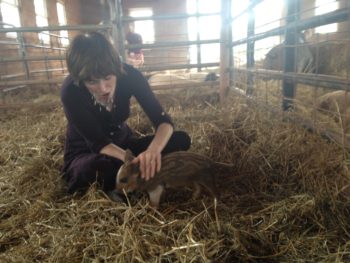
And according to thevegancalculator.com, a plant-eating math nerd’s happy place, making the switch to botanical dining will also keep one animal per day out of the breed-and-slaughter system which causes untold suffering. That’s 365 living beings per year, 7,300 over a twenty-year period.
To avoid, delay, halt, or even reverse heart disease, type 2 diabetes, Alzheimer’s and a host of other ills so prevalent among seniors we regard them as normal, you’ll probably need to do a little more. The foundational principle — eat plants, not animals — doesn’t change, but you may also wish to consider:
- Minimizing your use of processed foods, i.e., anything that didn’t grow from the ground.
- Curtailing your sugar consumption, including brown sugar, honey, fruit juices, and coffee shop drinks that elicit more bliss than is seemly for $4.25.
- Eliminating or cutting back markedly on bottled oils. This is controversial and I avoided it myself for decades of being a vegan. It’s confusing, too, because a lot of science supports a Mediterranean-style diet that includes ample EVOO. However, the only way of eating shown to reverse heart disease, which kills more women and men than anything else, has been very low in added fat. Suffice it to say for now that the endothelial cells that line every blood vessel in your body are apparently happier when you get the small amount of fat you need from whole foods, such as nuts, seeds, avocado, and soy products. At least avoid palm or coconut oil. Despite what you may have heard, these are highly saturated fats and they elevate blood cholesterol. And palm oil destroys orangutan habitat and the lives and homes of indiginous people in Papua New Guinea and elsewhere. (For more on palm oil, check out my second-segment interview on the Main Street Vegan Podcast when I get the full scoop of Milkadamia CEO Jim Roberts.)
- Eating colorful produce daily, and emphasizing greens. On the colorful side, think red beets, purple grapes, yellow peppers, orange papaya, white cauliflower (in the plant world, even white counts as a color). As for greens, eat arugula. Beet greens and bok choy and broccoli and Brussels sprouts. Cilantro and chard. Dandelion greens, endive and escarole, fennel stalks, garden cress — you can finish the alphabet.
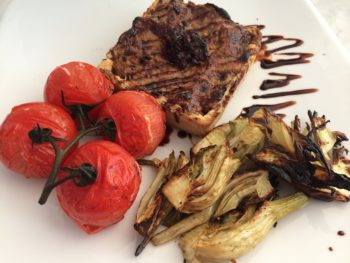
As an inveterate Anglophile, I love a classic English breakfast.
WFPB, gourmet, or keep-it-simple, you’re a vegan in good standing as long as the animal products are out of your diet. And unless you’re looking to treat active disease, do this your way. Use vegan versions of the foods you miss. Maybe you’re having a meal-planning senior moment: “Wait a minute, we always had burgers (or omelets or tacos or tuna salad) on Tuesdays. What am I supposed to do now?” It’s easy have a vegan burger or omelet or taco or tuna salad. You can purchase these items, or the fixings to make them, at most supermarkets and every big natural foods outlet. Serve them with salad and fresh fruit for dessert.
Your new normal meal plan might look something like this, amended, of course, to reflect your preferences, allergies, cultural background, and fondness (or lack of fondness) for spending time in the kitchen:
Breakfast:
- Oatmeal or overnight oats with berries, other fruit, ground flax, chia and/or hemp seeds, walnuts, and spices (cinnamon, nutmeg, mace, cardamom, allspice)
- A smoothie made with your favorite nondairy milk (soy, oat, rice, cashew, flax, et al), fresh or frozen blueberries, strawberries, or cherries, a banana or two (or another “creamy” fruit such as mango, papaya, or ripe persimmon), and whatever superfoods make you feel super: ground flax, green powders such as spirulena or chlorella, exotic additions like maca or moringa, and/or a good vegan protein powder, such as Vega or Sun Warrior (you don’t need extra protein, but if it will make you feel better, add it)
- A shake — this is a smoothie your inner child can get excited about: nondairy milk, cocoa powder (I get mine from Frontier Herbs because I know its harvesting is free from human rights abuses), one or two fresh or frozen bananas, one or two plump Medjool dates, and spices: cinnamon, clove, ginger, vanilla
- Toast: avocado toast with salsa or fresh tomatoes and lemon or lime juice; nutbutter on toast with apple, banana, and dates; beans on toast with mushrooms and microgreens or sprouts
- Scrambled tofu (or one of the commercial vegan egg scrambles if you’re still transitioning to all whole foods), tempeh bacon, fruit salad
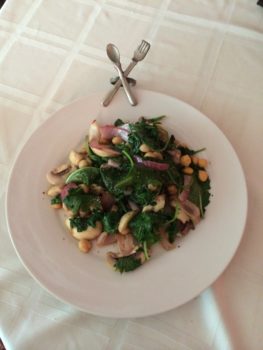
Lunch:
- A giant salad made from your favorite greens (romaine, arugula, baby kale, Bibb, Boston or butter lettuce, mesclun greens) and veggies (cabbage, radish, cucumber), plus oomph factor in the form or steamed sweet potatoes or yellow Finn potatoes, steamed broccoli, and red beans or black beans or chickpeas
- Greens and beans, the longevity stir-fry! First heat onion, garlic, and some long-life spices such as turmeric and ginger; then add beans or firm tofu cut into squares, followed by mushrooms, tomatoes and/or peppers if you want them; and finally greens (baby kale and spinach cook in nothing flat); season with tamari soy sauce and fresh lemon juice
- A wrap with veggies, hummus, or guacamole, or if you’re just getting your plant-based bearings, a Beyond or Impossible Burger from a fast casual or fast food place (have a salad with it. I know I keep saying that. Your arteries paid me to do it.)
Dinner:
- Soup — split pea, lentil, carrot-ginger, pumpkin spice, potato, minestrone — with salad and crusty wholegrain bread; finish with a square or two of dark chocolate
- Spaghetti marinara, or ziti with broccoli, or angel hair puttanesca, grilled fennel or braised zucchini, a simple salad, a glass of wine (or sparkling water with a splash of pomegranite juice) — strawberry sorbet for dessert
- A Buddha bowl: layer a whole grain (brown rice, quinoa, millet), legumes (black beans or red beans or black-eyed peas), a green veggie (broccoli, Brussels sprouts, kale), another veggie (winter squash, summer squash, carrots), and top with tahini dressing or cashew white sauce (if you don’t know how to make these yet, you will by the time you finish this book) — and chocolate mousse (avocado fills in for the butter, eggs, and cream).
The new normal is different from the old normal, the way being married is different from being single, having a family is different from being a couple, and old enough to know better is different from young and naive. We get used to new normals throughout our lives and they help us grow. This one will help us grow, too — and it will do a whole lot more.

Victoria Moran is a vegan of thirty-seven years, host of the Main Street Vegan podcast, and director of Main Street Vegan Academy. Her books include Main Street Vegan, Creating a Charmed Life, and Shelter for the Spirit. Her Amazon author page is here. Victoria is also a cofounder of the Compassion Consortium, a interfaith, interspiritual, interspecies center for people who care about animals: https://compassionconsortium.org. The CC meets via Zoom, holding a celebration service the 4th Sunday of every month, 4 pm Eastern Time.
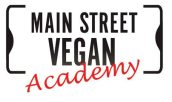
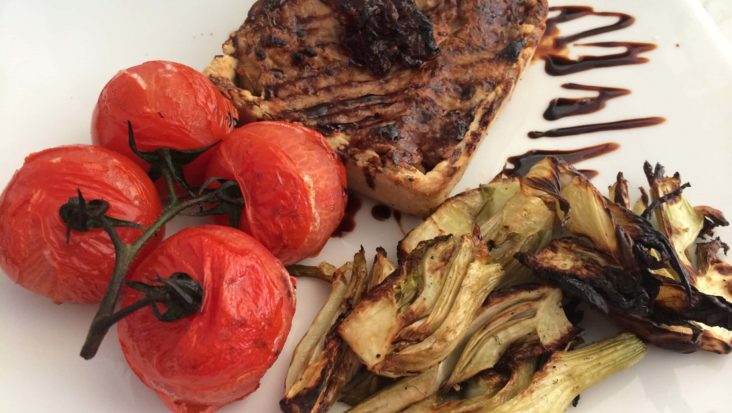
Love this!!! This is perfect to share with the many not yet vegans within my circle. Thank you, Victoria❤️
Well reasoned article with reasonable dietary guidelines, perhaps the basis of your next book, if not extracted from one of your older ones. If for your next book, note the typo in Number 3 about bottled oils: “when you get the small about of fat” where “about” wants to be “amount.”
Phenomenal article!!!